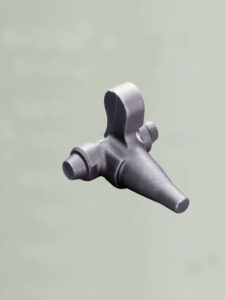Construction Equipment Forgings
What Are Construction Equipment Forgings? A Comprehensive Guide
In the demanding world of construction, equipment must withstand immense stress, impact, and fatigue. At the heart of the most durable and reliable machinery are Construction Equipment Forgings. But what exactly are they, and why are they the preferred choice for critical components?
Construction Equipment Forgings are metal components, typically made from high-strength steel or alloy, that are shaped through the industrial forging process. This process involves heating metal to a high temperature and then applying compressive force—through hammers, presses, or upsetters—to deform it into a desired shape. This results in a part with a superior grain structure, exceptional strength, and unparalleled toughness, making it ideal for the harsh environments of construction sites.

What Components Are Included in Construction Equipment Forgings?
Construction Equipment Forgings cover a wide range of critical parts across various types of machinery. Common examples include:
Undercarriage Components: Track links, track shoes, rollers, and idlers for bulldozers and excavators.
Earth-Moving Parts: Bucket teeth, adapter systems, loader arms, and boom sections for excavators and backhoes.
Driveline and Powertrain Parts: Gears, shafts, axles, and crankshafts.
Hydraulic Components: Cylinder rods, piston heads, and valve bodies.
Lifting and Suspension Parts: Kingpins, shackles, and clevises for cranes and other lifting equipment.
Key Benefits of Construction Equipment Forgings
Why do manufacturers insist on Construction Equipment Forgings for their most critical applications? The advantages are clear:
Superior Strength and Impact Resistance: The forging process aligns the metal’s grain flow to the contours of the part, creating a continuous structure that is significantly stronger than cast or machined parts. This makes forgings highly resistant to shock and impact loads.
Enhanced Durability and Fatigue Resistance: Forged components can withstand repeated stress cycles without cracking, which is crucial for equipment that operates continuously under heavy loads.
Greater Reliability and Safety: The internal integrity of forgings is high, with minimal voids, porosity, or inclusions. This reduces the risk of catastrophic failure, ensuring operator safety and machine uptime.
Cost-Effectiveness in the Long Run: While the initial cost may be higher than casting, the extended service life and reduced downtime of forged parts lead to a lower total cost of ownership.

Forging vs. Casting: Why Forgings are Superior for Heavy-Duty Equipment
While casting involves pouring molten metal into a mold, forging physically deforms solid metal. This fundamental difference gives Construction Equipment Forgings a distinct edge:
Grain Structure: Forgings have a refined and directional grain flow, like the grain in wood, making them tougher. Castings have a coarse, non-directional grain that is more brittle.
Density: The forging process compacts the metal, eliminating internal cavities and porosity common in castings. This results in higher density and better mechanical properties.
Impact Toughness: Forged parts are significantly better at absorbing energy upon impact without breaking, whereas cast parts are more prone to fracture.
In short, when failure is not an option, Construction Equipment Forgings are the undisputed choice.
The Forging Process: How Construction Equipment Forgings Are Made
The production of high-quality Construction Equipment Forgings typically involves several key steps:
Billet Heating: A metal billet is heated to a precise, high temperature to make it malleable.
Forging: The heated billet is placed into dies (molds) and shaped using a powerful press or hammer. This can be done through open-die or closed-die (impression-die) forging.
Trimming & Punching: Excess material (flash) is trimmed away, and holes may be punched.
Heat Treatment: The forgings are thermally treated (e.g., normalized, quenched, and tempered) to achieve the desired mechanical properties like hardness and toughness.
Finishing: The parts are cleaned (e.g., shot blasting) and often machined to precise final dimensions.
Custom Construction Equipment Forgings: We Work to Your Drawings
At our facility, we understand that standard parts are not always sufficient. That’s why we specialize in providing custom Construction Equipment Forgings tailored to your specific needs.
We can precisely manufacture forgings according to your technical drawings and specifications. Our engineering team will work closely with you to ensure the final product meets your exact requirements for material, dimensions, tolerances, and performance. Whether you need a prototype run or full-scale production, we have the capability and expertise to deliver.
Contact us today to discuss your project and discover how our high-performance Construction Equipment Forgings can enhance the durability and reliability of your machinery.
